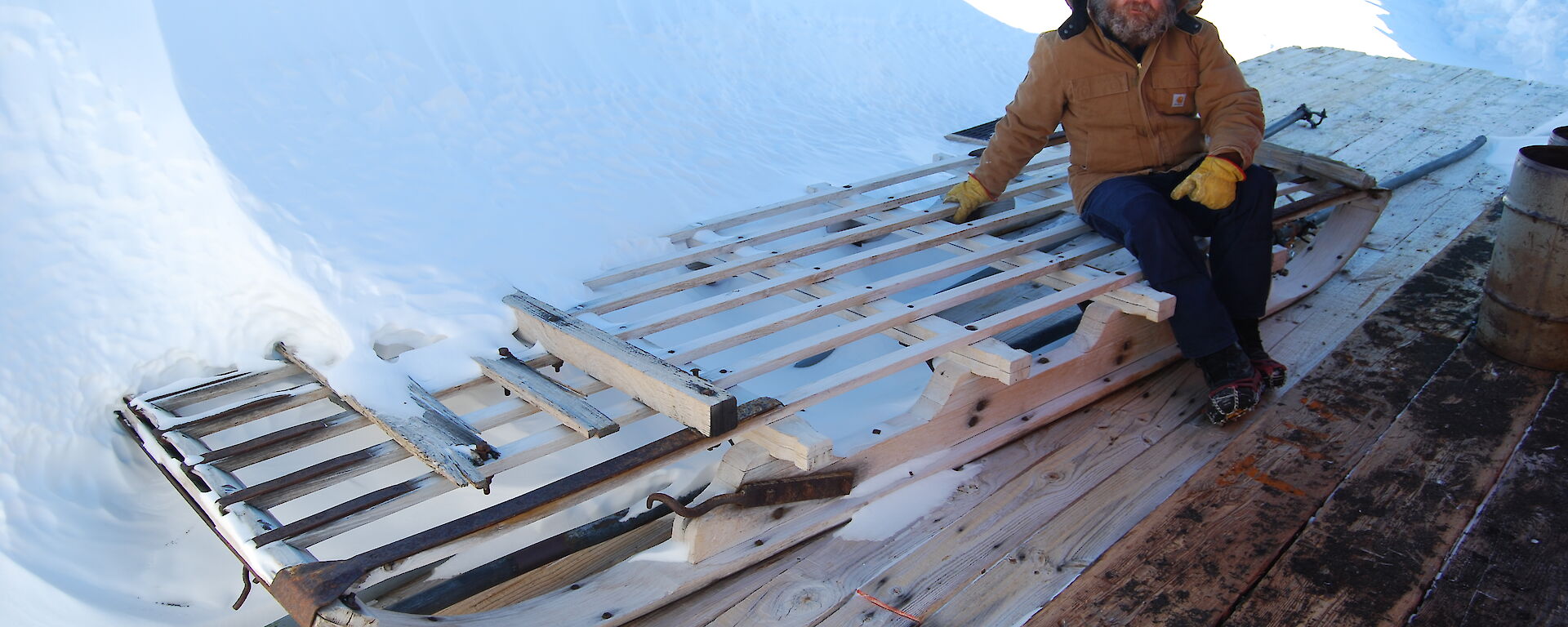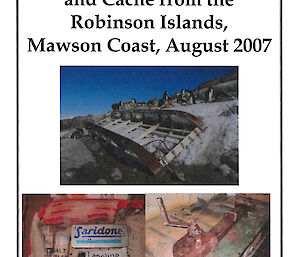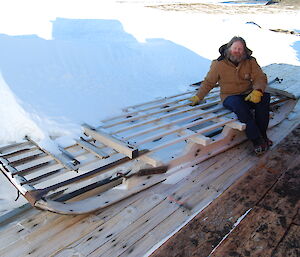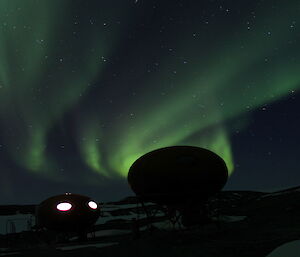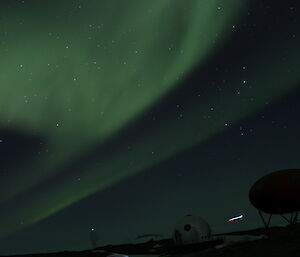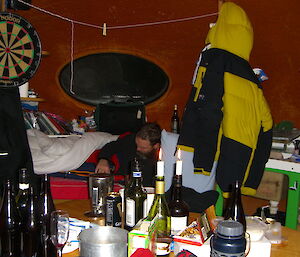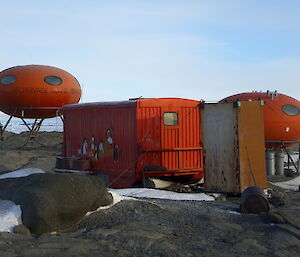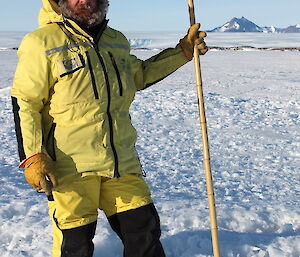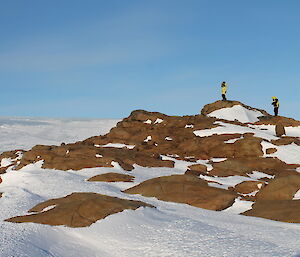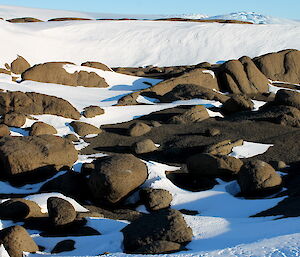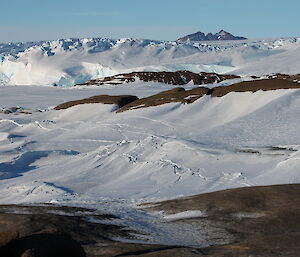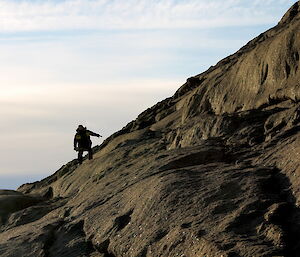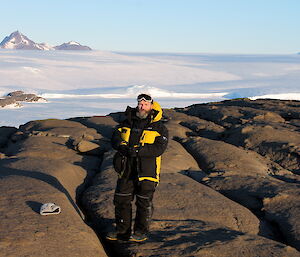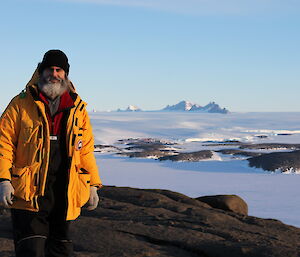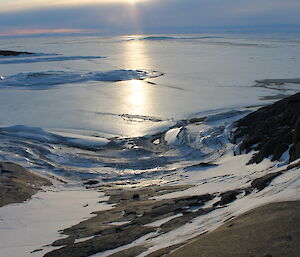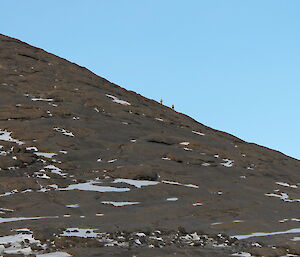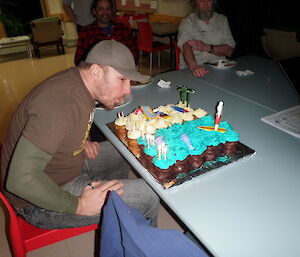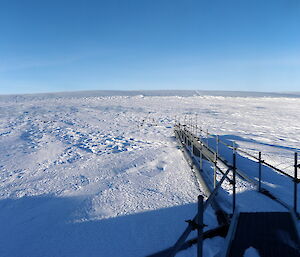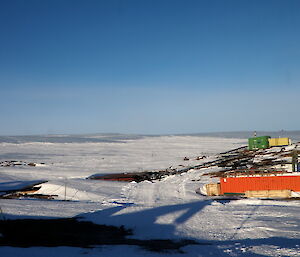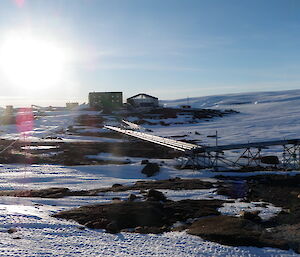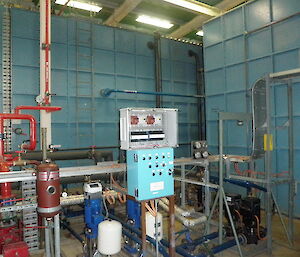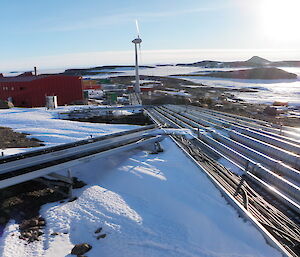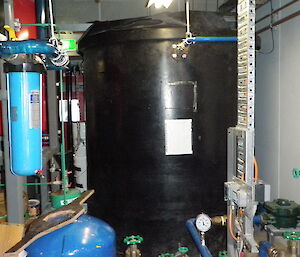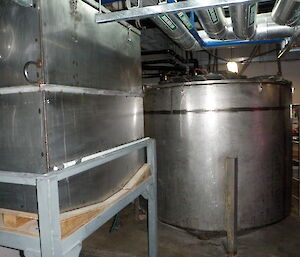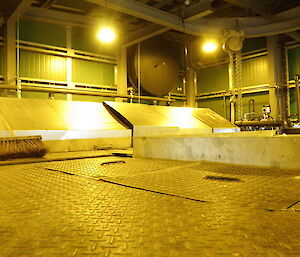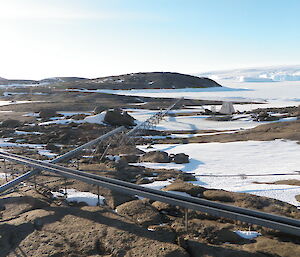I followed my hunch up with George and he also contacted the remaining 1960 expeditioners to see if they recalled the events. While waiting for an answer I read through the 1960 Mawson station log book kept by OIC Henk Geysen and came across the exact event.
Thursday 2nd November 1960
…The weasel was easily located as we picked up its track from the air. The aircraft was able to land close to the weasel and John Humble and Bill Dick brought all the gear to the weasel on the pulka . At 1:00am we had the weasel out and it was fully serviceable at 3:00am. After which we retired for a coupe of hours sleep after some very hard work…
Sunday 6th November 1960
Little activity in the morning although the weather was very nice… The field party contacted us and informed us that they had lost the weasel approx. 16 miles from Mawson near one of the island in the Robinson group. The flight prepared immediately the Beaver and Jim and myself left Mawson in order to locate them. We found them quite quickly but the landing was quite difficult in near white out conditions. The Doc and his party has salvaged most of the gear and had made camp on one of the islands. The caravan was still on the weak patch in the ice approx.3/4 mile away from the island. The weasel has broken through and disappeared almost immediately. Bill Dick had enough presence of mind to sever the rope between the Caravan and the weasel avoiding that the caravan would have been dragged in the hole by the weasel…
Tuesday 8th November 1960
Graham Dyke flew George Creswell John Humble and myself to the areas where the caravan was stranded and the three of us managed to salvage the Norwegian sledge and all other equipment leaving the caravan hull where the weasel had disappeared. We even took out the windows. The caravan being an A type was not a very good one and as such is not a great loss. It was quite a job to get the sledge and the equipment on the island but it was done…
Grayham Dyke who was one of the pilots at Mawson station in 1960 emailed to confirm the following; “I checked my logbook and can confirm that on the 8th November I flew to pick up a man haul party”
Then Robert Merrick emailed with a very comical account of the event which was written in the Mawson station news paper “Katabatic” at the time of the event.
“Adding to George’s diary report, Katabatic reported in its honest and forthright way about the salvage operations:
Following an abortive effort to reach the site of the rapidly sinking caravan and Norwegian sled by WM, Jungle and Bril in the Jeep, experts were called in. They were Dick and Cresswell. Feeling that a Sherpa was warranted for the operation they chose the amiable Geysen.
Tuesday at 1015hrs saw the trio landed by Beaver by the fearless aviator Dyke on thin ice merely an ICBM distance downwind from the caravan.
The trio set off toward, reached, stripped and chopped holes in the caravan. Everything of value was salvaged. All that remained was to pull the Norwegian sled minus the caravan over to the nearby island. So that it would not go too fast and overhaul the haulers, such items as the Trewella jack, chain blocks, crowbars and toolboxes were thoughtfully placed on the sled by star man hauler Dick. The island was reached some 40000 calories later and all loot deposited.
The inevitable cairn was built and then the salvagers amused themselves watching Adelies mating. Sherpa Geysen later fell thru the sea ice but (to quote the newsletter) was fortunately unhurt. GD came back later and the party returned to Mawson.
I also found the same event documented in the field report dated 2nd to 6th November 1960. So, finally after 53 years, the mystery of the Historic Norwegian Sledge and Cache discovered at the Robinson Islands has been solved.
I would like to thank the following people:
George Cresswell
Dave McCormack
Robert Merrick
Grayham Dyke
Syd Kirkby
Terry Elkins

